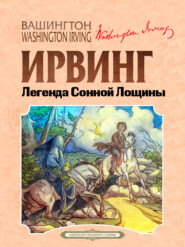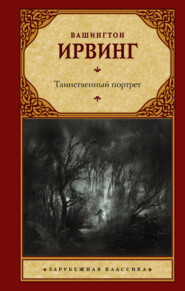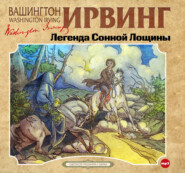По всем вопросам обращайтесь на: info@litportal.ru
(©) 2003-2025.
✖
Astoria; Or, Anecdotes of an Enterprise Beyond the Rocky Mountains
Настройки чтения
Размер шрифта
Высота строк
Поля
The export trade of furs from the United States is chiefly to London. Some quantities have been sent to Canton, and some few to Hamburg; and an increasing export trade in beaver, otter, nutria, and vicunia wool, prepared for the hatter’s use, is carried on in Mexico. Some furs are exported from Baltimore, Philadelphia, and Boston; but the principal shipments from the United States are from New York to London, from whence they are sent to Leipsic, a well-known mart for furs, where they are disposed of during the great fair in that city, and distributed to every part of the continent.
The United States import from South America, nutria, vicunia, chinchilla, and a few deer-skins; also fur seals from the Lobos Islands, off the river Plate. A quantity of beaver, otter, &c., are brought annually from Santa Fe. Dressed furs for edgings, linings, caps, muffs, &c., such as squirrel, genet, fitch-skins, and blue rabbit, are received from the north of Europe; also cony and hare’s fur; but the largest importations are from London, where is concentrated nearly the whole of the North American fur trade.
Such is the present state of the fur trade, by which it will appear that the extended sway of the Hudson’s Bay Company, and the monopoly of the region of which Astoria was the key, has operated to turn the main current of this opulent trade into the coffers of Great Britain, and to render London the emporium instead of New York, as Mr. Astor had intended.
We will subjoin a few observations on the animals sought after in this traffic, extracted from the same intelligent source with the preceding remarks.
Of the fur-bearing animals, “the precious ermine,” so called by way of preeminence, is found, of the best quality, only in the cold regions of Europe and Asia.[10 - An animal called the stoat, a kind of ermine, is said to be found in North America, but very inferior to the European and Asiatic.] Its fur is of the most perfect whiteness, except the tip of its tail, which is of a brilliant shining black. With these back tips tacked on the skins, they are beautifully spotted, producing an effect often imitated, but never equalled in other furs. The ermine is of the genus mustela (weasel), and resembles the common weasel in its form, is from fourteen to sixteen inches from the tip of the nose to the end of the tail. The body is from ten to twelve inches long. It lives in hollow trees, river banks, and especially in beech forests; preys on small birds, is very shy, sleeping during the day, and employing the night in search of food. The fur of the older animals is preferred to the younger. It is taken by snares and traps, and sometimes shot with blunt arrows. Attempts have been made to domesticate it; but it is extremely wild and has been found untameable.
The sable can scarcely be called second to the ermine. It is a native of Northern Europe and Siberia, and is also of the genus mustela. In Samoieda, Yakutsk, Kamtschatka, and Russian Lapland, it is found of the richest quality, and darkest color. In its habits, it resembles the ermine. It preys on small squirrels and birds, sleeps by day, and prowls for food during the night. It is so like the marten in every particular except its size, and the dark shade of its color, that naturalists have not decided whether it is the richest and finest of the marten tribe, or a variety of that species: It varies in dimensions from eighteen to twenty inches.
The rich dark shades of the sable, and the snowy whiteness of the ermine, the great depth, and the peculiar, almost flowing softness of their skins and fur, have combined to gain them a preference in all countries, and in all ages of the world. In this age, they maintain the same relative estimate in regard to other furs, as when they marked the rank of the proud crusader, and were emblazoned in heraldry: but in most European nations, they are now worn promiscuously by the opulent.
The martens from Northern Asia and the Mountains of Kamtschatka are much superior to the American, though in every pack of American marten skins there are a certain number which are beautifully shaded, and of a dark brown olive color, of great depth and richness.
Next these in value, for ornament and utility, are the sea-otter, the mink, and the fiery fox.
The fiery fox is the bright red of Asia; is more brilliantly colored and of finer fur than any other of the genus. It is highly valued for the splendor of its red color and the fineness of its fur. It is the standard of value on the northeastern coast of Asia.
The sea-otter which was first introduced into commerce in 1725, from the Aleutian and Kurile Islands, is an exceedingly fine, soft, close fur, jet black in winter, with a silken gloss. The fur of the young animal is of a beautiful brown color. It is met with in great abundance in Behring’s Island, Kamtschatka, Aleutian and Fox Islands, and is also taken on the opposite coasts of North America. It is sometimes taken with nets, but more frequently with clubs and spears. Their food is principally lobster and other shell-fish.
In 1780 furs had become so scarce in Siberia that the supply was insufficient for the demand in the Asiatic countries. It was at this time that the sea-otter was introduced into the markets for China. The skins brought such incredible prices, as to originate immediately several American and British expeditions to the northern islands of the Pacific, to Nootka Sound, and the northwest coast of America; but the Russians already had possession of the tract which they now hold, and had arranged a trade for the sea-otter with the Koudek tribes. They do not engross the trade, however; the American northwest trading ships procure them, all along the coast, from the Indians.
At one period, the fur seals formed no inconsiderable item in the trade. South Georgia, in south latitude fifty-five degrees, discovered in 1675, was explored by Captain Cook in 1771. The Americans immediately commenced carrying seal skins thence to China, where they obtained the most exorbitant prices. One million two hundred thousand skins have been taken from that island alone, and nearly an equal number from the Island of Desolation, since they were first resorted to for the purpose of commerce.
The discovery of the South Shetlands, sixty-three degrees south latitude, in 1818, added surprisingly to the trade in fur seals. The number taken from the South Shetlands in 1821 and 1822 amounted to three hundred and twenty thousand. This valuable animal is now almost extinct in all these islands, owing to the exterminating system adopted by the hunters. They are still taken on the Lobos Islands, where the provident government of Montevideo restrict the fishery, or hunting, within certain limits, which insures an annual return of the seals. At certain seasons, these amphibia, for the purpose of renewing their coat, come up on the dark frowning rocks and precipices, where there is not a trace of vegetation. In the middle of January, the islands are partially cleared of snow, where a few patches of short straggling grass spring up in favorable situations; but the seals do not resort to it for food. They remain on the rocks not less than two months, without any sustenance, when they return much emaciated to the sea.
Bears of various species and colors, many varieties of the fox, the wolf, the beaver, the otter, the marten, the raccoon, the badger, the wolverine, the mink, the lynx, the muskrat, the woodchuck, the rabbit, the hare, and the squirrel, are natives of North America.
The beaver, otter, lynx fisher, hare, and raccoon, are used principally for hats; while the bears of several varieties furnish an excellent material for sleigh linings, for cavalry caps, and other military equipments. The fur of the black fox is the most valuable of any of the American varieties; and next to that the red, which is exported to China and Smyrna. In China, the red is employed for trimmings, linings, and robes; the latter being variegated by adding the black fur of the paws, in spots or waves. There are many other varieties of American fox, such as the gray, the white, the cross, the silver, and the dun-colored. The silver fox is a rare animal, a native of the woody country below the falls of the Columbia River. It has a long, thick, deep lead-colored fur, intermingled with long hairs, invariably white at the top, forming a bright lustrous silver gray, esteemed by some more beautiful than any other kind of fox.
The skins of the buffalo, of the Rocky Mountain sheep, of various deer and of the antelope, are included in the fur trade with the Indians and trappers of the north and west.
Fox and seal skins are sent from Greenland to Denmark. The white fur of the arctic fox and polar bear is sometimes found in the packs brought to the traders by the most northern tribes of Indians, but is not particularly valuable. The silver-tipped rabbit is peculiar to England, and is sent thence to Russia and China.
Other furs are employed and valued according to the caprices of fashion, as well in those countries where they are needed for defenses against the severity of the seasons, as among the inhabitants of milder climates, who, severely of Tartar or Sclavonian descent, are said to inherit an attachment to furred clothing. Such are the inhabitants of Poland, of Southern Russia, of China, of Persia, of Turkey, and all the nations of Gothic origin in the middle and western parts of Europe. Under the burning suns of Syria and Egypt, and the mild climes of Bucharia and Independent Tartary, there is also a constant demand, and a great consumption, where there exists no physical necessity. In our own temperate latitudes, besides their use in the arts, they are in request for ornament and warmth during the winter, and large quantities are annually consumed for both purposes in the United States.
From the foregoing statements, it appears that the fur trade must henceforward decline. The advanced state of geographical science shows that no new countries remain to be explored. In North America the animals are slowly decreasing, from the persevering efforts and the indiscriminate slaughter practiced by the hunters, and by the appropriation to the uses of man of those forests and rivers which have afforded them food and protection. They recede with the aborigines, before the tide of civilization; but a diminished supply will remain in the mountains and uncultivated tracts of this and other countries, if the avidity of the hunter can be restrained within proper limitations.
Height of the Rocky Mountains
VARIOUS estimates have been made of the height of the Rocky Mountains, but it is doubtful whether any have, as yet, done justice to their real altitude, which promises to place them only second to the highest mountains of the known world. Their height has been diminished to the eye by the great elevation of the plains from which they rise. They consist, according to Long, of ridges, knobs, and peaks, variously disposed. The more elevated parts are covered with perpetual snows, which contribute to give them a luminous, and, at a great distance, even a brilliant appearance; whence they derive, among some of the first discoverers, the name of the Shining Mountains.
James’s Peak has generally been cited as the highest of the chain; and its elevation above the common level has been ascertained, by a trigonometrical measurement, to be about eight thousand five hundred feet. Mr. Long, however, judged, from the position of the snow near the summits of other peaks and ridges at no great distance from it, that they were much higher. Having heard Professor Renwick, of New York, express an opinion of the altitude of these mountains far beyond what had usually been ascribed to them, we applied to him for the authority on which he grounded his observation, and here subjoin his reply:
Columbia College, New York, February 23, 1836.
Dear Sir, – In compliance with your request, I have to communicate some facts in relation to the heights of the Rocky Mountains, and the sources whence I obtained the information.
In conversation with Simon M’Gillivray, Esq., a partner of the Northwest Company, he stated to me his impression, that the mountains in the vicinity of the route pursued by the traders of that company were nearly as high as the Himalayas. He had himself crossed by this route, seen the snowy summits of the peaks, and experienced a degree of cold which required a spirit thermometer to indicate it. His authority for the estimate of the heights was a gentleman who had been employed for several years as surveyor of that company. This conversation occurred about sixteen years since.
A year or two afterwards, I had the pleasure of dining, at Major Delafield’s with Mr. Thompson, the gentleman referred to by Mr. M’Gillivray. I inquired of him in relation to the circumstances mentioned by Mr. M’Gillivray, and he stated that, by the joint means of the barometric and trigonometric measurement, he had ascertained the height of one of the peaks to be about twenty-five thousand feet, and there were others of nearly the same height in the vicinity.
I am, dear sir, To W. Irving, Esq. Yours truly, JAMES RENWICK.
Suggestions with respect to the Indian tribes, and the protection of our Trade.
IN the course of this work, a few general remarks have been hazarded respecting the Indian tribes of the prairies, and the dangers to be apprehended from them in future times to our trade beyond the Rocky Mountains and with the Spanish frontiers. Since writing those remarks, we have met with some excellent observations and suggestions, in manuscript, on the same subject, written by Captain Bonneville, of the United States army, who had lately returned from a long residence among the tribes of the Rocky Mountains. Captain B. approves highly of the plan recently adopted by the United States government for the organization of a regiment of dragoons for the protection of our western frontier, and the trade across the prairies. “No other species of military force,” he observes, “is at all competent to cope with these restless and wandering hordes, who require to be opposed with swiftness quite as much as with strength; and the consciousness that a troop, uniting these qualifications, is always on the alert to avenge their outrages upon the settlers and traders, will go very far towards restraining them from the perpetration of those thefts and murders which they have heretofore committed with impunity, whenever stratagem or superiority of force has given them the advantage. Their interest already has done something towards their pacification with our countrymen. From the traders among them, they receive their supplies in the greatest abundance, and upon very equitable terms; and when it is remembered that a very considerable amount of property is yearly distributed among them by the government, as presents, it will readily be perceived that they are greatly dependent upon us for their most valued resources. If, superadded to this inducement, a frequent display of military power be made in their territories, there can be little doubt that the desired security and peace will be speedily afforded to our own people. But the idea of establishing a permanent amity and concord amongst the various east and west tribes themselves, seems to me, if not wholly impracticable, at least infinitely more difficult than many excellent philanthropists have hoped and believed. Those nations which have so lately emigrated from the midst of our settlements to live upon our western borders, and have made some progress in agriculture and the arts of civilization, have, in the property they have acquired, and the protection and aid extended to them, too many advantages to be induced readily to take up arms against us, particularly if they can be brought to the full conviction that their new homes will be permanent and undisturbed; and there is every reason and motive, in policy as well as humanity, for our ameliorating their condition by every means in our power. But the case is far different with regard to the Osages, the Kanzas, the Pawnees, and other roving hordes beyond the frontiers of the settlements. Wild and restless in their character and habits, they are by no means so susceptible of control or civilization; and they are urged by strong, and, to them, irresistible causes in their situation and necessities, to the daily perpetuation of violence and fraud. Their permanent subsistence, for example, is derived from the buffalo hunting grounds, which lie a great distance from their towns. Twice a year they are obliged to make long and dangerous expeditions, to procure the necessary provisions for themselves and their families. For this purpose horses are absolutely requisite, for their own comfort and safety, as well as for the transportation of their food, and their little stock of valuables; and without them they would be reduced, during a great portion of the year, to a state of abject misery and privation. They have no brood mares, nor any trade sufficiently valuable to supply their yearly losses, and endeavor to keep up their stock by stealing horses from the other tribes to the west and southwest. Our own people, and the tribes immediately upon our borders, may indeed be protected from their depredations; and the Kanzas, Osages, Pawnees, and others, may be induced to remain at peace among themselves, so long as they are permitted to pursue the old custom of levying upon the Camanches and other remote nations for their complement of steeds for the warriors, and pack-horses for their transportation to and from the hunting ground. But the instant they are forced to maintain a peaceful and inoffensive demeanor towards the tribes along the Mexican border, and find that every violation of their rights is followed by the avenging arm of our government, the result must be, that, reduced to a wretchedness and want which they can ill brook, and feeling the certainty of punishment for every attempt to ameliorate their condition in the only way they as yet comprehend, they will abandon their unfruitful territory and remove to the neighborhood of the Mexican lands, and there carry on a vigorous predatory warfare indiscriminately upon the Mexicans and our own people trading or travelling in that quarter.
“The Indians of the prairies are almost innumerable. Their superior horsemanship, which in my opinion, far exceeds that of any other people on the face of the earth, their daring bravery, their cunning and skill in the warfare of the wilderness, and the astonishing rapidity and secrecy with which they are accustomed to move in their martial expeditions, will always render them most dangerous and vexatious neighbors, when their necessities or their discontents may drive them to hostility with our frontiers. Their mode and principles of warfare will always protect them from final and irretrievable defeat, and secure their families from participating in any blow, however severe, which our retribution might deal out to them.
“The Camanches lay the Mexicans under contribution for horses and mules, which they are always engaged in stealing from them in incredible numbers; and from the Camanches, all the roving tribes of the far West, by a similar exertion of skill and daring, supply themselves in turn. It seems to me, therefore, under all these circumstances, that the apparent futility of any philanthropic schemes for the benefit of these nations, and a regard for our own protection, concur in recommending that we remain satisfied with maintaining peace upon our own immediate borders, and leave the Mexicans and the Camanches, and all the tribes hostile to these last, to settle their differences and difficulties in their own way.
“In order to give full security and protection to our trading parties circulating in all directions through the great prairies, I am under the impression that a few judicious measures on the part of the government, involving a very limited expense, would be sufficient. And, in attaining this end, which of itself has already become an object of public interest and import, another, of much greater consequence, might be brought about, namely, the securing to the States a most valuable and increasing trade, now carried on by caravans directly to Santa Fe.
“As to the first desideratum: the Indians can only be made to respect the lives and property of the American parties, by rendering them dependent upon us for their supplies; which alone can be done with complete effect by the establishment of a trading post, with resident traders, at some point which will unite a sufficient number of advantages to attract the several tribes to itself, in preference to their present places of resort for that purpose; for it is a well-known fact that the Indians will always protect their trader, and those in whom he is interested, so long as they derive benefits from him. The alternative presented to those at the north, by the residence of the agents of the Hudson’s Bay Company amongst them, renders the condition of our people in that quarter less secure; but I think it will appear at once, upon the most cursory examination, that no such opposition further south could be maintained, so as to weaken the benefits of such an establishment as is here suggested.
“In considering this matter, the first question which presents itself is, where do these tribes now make their exchanges, and obtain their necessary supplies. They resort almost exclusively to the Mexicans, who, themselves, purchase from us whatever the Indians most seek for. In this point of view, therefore, coeteris paribus, it would be an easy matter for us to monopolize the whole traffic. All that is wanted is some location more convenient for the natives than that offered by the Mexicans, to give us the undisputed superiority; and the selection of such a point requires but a knowledge of the single fact, that these nations invariably winter upon the head waters of the Arkansas, and there prepare all their buffalo robes for trade. These robes are heavy, and, to the Indian, very difficult of transportation. Nothing but necessity induces them to travel any great distance with such inconvenient baggage. A post, therefore, established upon the head waters of the Arkansas, must infallibly secure an uncontested preference over that of the Mexicans; even at their prices and rates of barter. Then let the dragoons occasionally move about among these people in large parties, impressing them with the proper estimate of our power to protect and to punish, and at once we have complete and assured security for all citizens whose enterprise may lead them beyond the border, and an end to the outrages and depredations which now dog the footsteps of the traveller, in the prairies, and arrest and depress the most advantageous commerce. Such a post need not be stronger than fifty men; twenty-five to be employed as hunters, to supply the garrison, and the residue as a defense against any hostility. Situated here upon the good lands of the Arkansas, in the midst of abundance of timber, while it might be kept up at a most inconsiderable expense, such an establishment within ninety miles of Santa Fe or Taos would be more than justified by the other and more important advantages before alluded to, leaving the protection of the traders with the Indian tribes entirely out of the question.
“This great trade, carried on by caravans to Santa Fe, annually loads one hundred wagons with merchandise, which is bartered in the northern provinces or Mexico for cash and for beaver furs. The numerous articles excluded as contraband, and the exorbitant duties laid upon all those that are admitted by the Mexican government, present so many obstacles to commerce, that I am well persuaded, that if a post, such as is here suggested, should be established on the Arkansas, it would become the place of deposit, not only for the present trade, but for one infinitely more extended. Here the Mexicans might purchase their supplies, and might well afford to sell them at prices which would silence all competition from any other quarter.
“These two trades, with the Mexicans and the Indians, centring at this post, would give rise to a large village of traders and laborers, and would undoubtedly be hailed, by all that section of country, as a permanent and invaluable advantage. A few pack-horses would carry all the clothing and ammunition necessary for the post during the first year, and two light field-pieces would be all the artillery required for its defense. Afterwards, all the horses required for the use of the establishment might be purchased from the Mexicans at the low price of ten dollars each; and, at the same time, whatever animals might be needed to supply the losses among the dragoons traversing the neighborhood, could be readily procured. The Upper Missouri Indians can furnish horses, at very cheap rates, to any number of the same troops who might be detailed for the defense of the northern frontier; and, in other respects, a very limited outlay of money would suffice to maintain a post in that section of the country.
“From these considerations, and my own personal observations, I am, therefore, disposed to believe that two posts established by the government, one at the mouth of the Yellowstone River, and one on the Arkansas, would completely protect all our people in every section of the great wilderness of the West; while other advantages, at least with regard to one of them, confirm and urge the suggestion. A fort at the mouth of the Yellowstone, garrisoned by fifty men would be perfectly safe. The establishment might be constructed simply with a view to the stores, stables for the dragoons’ horses, and quarters for the regular garrison; the rest being provided with sheds or lodges, erected in the vicinity, for their residence during the winter months.”
notes
1
Carver’s Travels, Introd. b. iii. Philad. 1796.
2
Carver’s Travels, p. 360.
3
On this point Mr. Jefferson’s memory was in error. The proposition alluded to was the one, already mentioned, for the establishment of an American Fur Company in the Atlantic States. The great enterprise beyond the mountains, that was to sweep the shores of the Pacific, originated in the mind of Mr. Astor, and was proposed by him to the government.
4
It appears, from the accounts of subsequent voyagers, that Tamaahmaah afterwards succeeded in his wish of purchasing a large ship. In this he sent a cargo of sandal-wood to Canton, having discovered that the foreign merchants trading with him made large profits on this wood, shipped by them from the islands to the Chinese markets. The ship was manned by natives, but the officers were Englishmen. She accomplished her voyage, and returned in safety to the islands, with the Hawaiian flag floating gloriously in the breeze. The king hastened on board, expecting to find his sandal-wood converted into crapes and damasks, and other rich stuffs of China, but found, to his astonishment, by the legerdemain of traffic, his cargo had all disappeared, and, in place of it, remained a bill of charges amounting to three thousand dollars. It was some time before he could be made to comprehend certain of the most important items of the bill, such as pilotage, anchorage, and custom-house fees; but when he discovered that maritime states in other countries derived large revenues in this manner, to the great cost of the merchant, “Well,” cried he, “then I will have harbor fees also.” He established them accordingly. Pilotage a dollar a foot on the draft of each vessel. Anchorage from sixty to seventy dollars. In this way he greatly increased the royal revenue, and turned his China speculation to account.
5
(Lewis and Clarke, vol. ii. p. 32.)
6

















